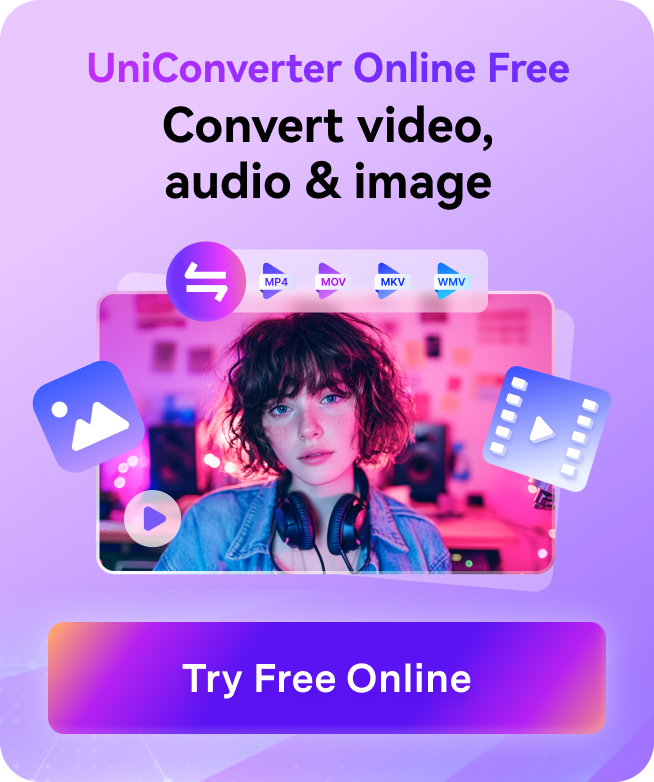If you've been thinking about sharing your voice with the world, there's no better time to jump into podcasting and learnhow to start a podcast on Spotify than right now.
Spotify isn't just for music; it has become one of the most loved and powerful platforms for podcasters to reach millions of listeners worldwide. Whether you're passionate about true crime or business tips or simply want to discuss your favorite TV shows, Spotify provides the perfect platform to connect with your audience.
This guide will walk you through everything you need to know about how to make a podcast on Spotify, from initial setup to growing your listener base. Get ready to turn your ideas into engaging audio content that people will love!
In this article
Part 1. What is Spotify Podcast?
Spotify Podcast is a feature within the popular music streaming platform that allows creators to host, distribute, and monetize their audio and video content. Launched initially as a music streaming service, Spotify has evolved into one of the world's largest directories for podcasts.
The beauty of Spotify's podcast platform lies in its massive reach and sophisticated recommendation algorithms. When you learn how to create a podcast on Spotify, you're tapping into a user base that's already engaged and looking for fresh content to discover.
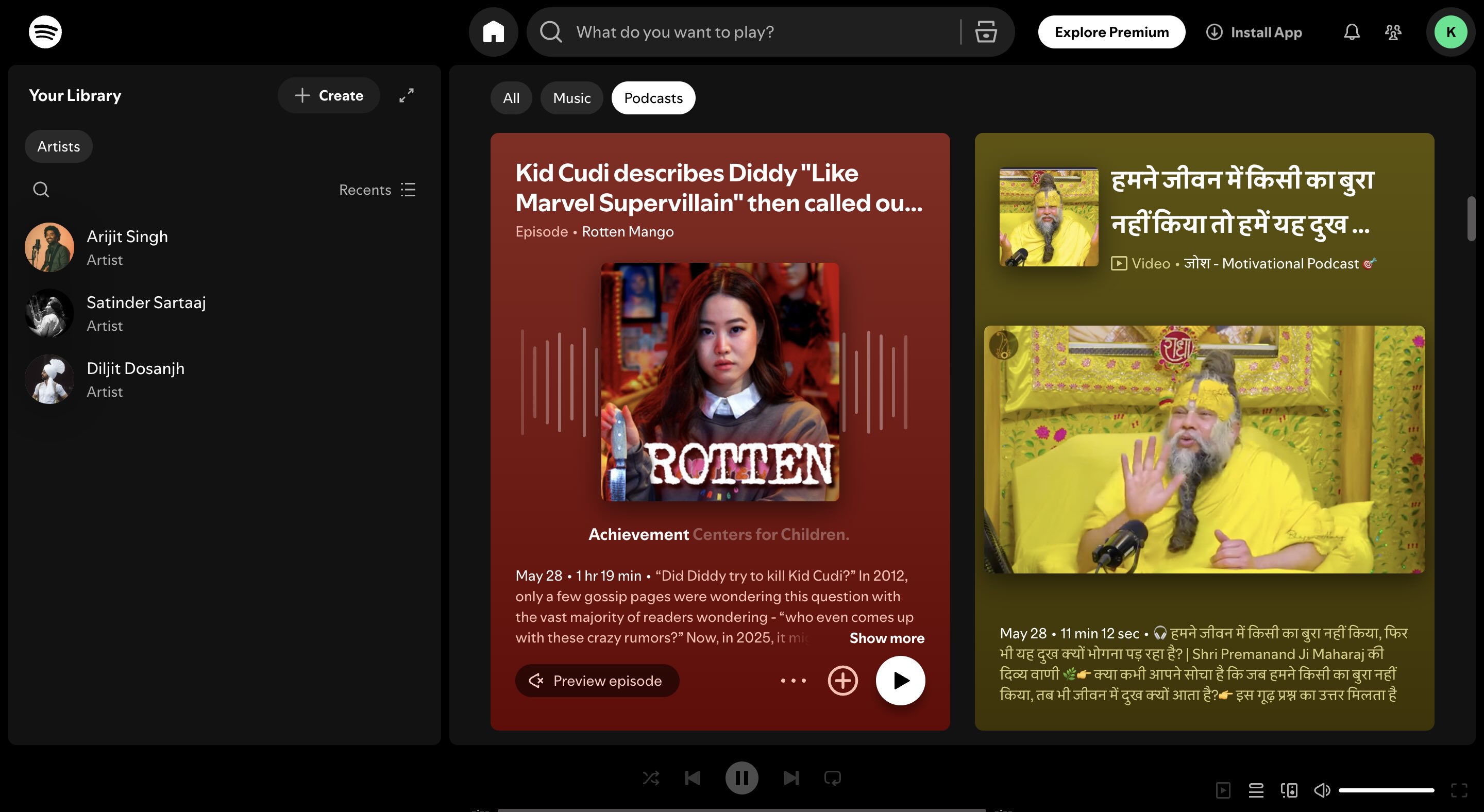
Benefits of Creating a Podcast on Spotify
- Massive Audience Reach: Access to millions of active listeners who are already browsing for new content.
- Free Hosting Options: Spotify for Podcasters offers hosting of your content at no cost.
- Advanced Analytics: Gain detailed insights into your listeners, including their demographics and listening habits.
- Monetization Opportunities: Earn money through Spotify's ad insertion and subscription features.
- Cross-Platform Integration: Your content automatically syncs across all Spotify apps and devices.
- Smart Recommendations: Spotify's algorithm helps new listeners discover your show based on their interests and preferences.
- Video Podcast Support: Upload both audio and video content to reach diverse audiences.
- Professional Tools: Access to editing features and interactive elements, such as polls and Q&As.
Super Easy to Use Noice Reducer for Win and Mac
Part 2. Preparation Before Creating a Spotify Podcast
Before diving into how to start a podcast on Spotify, you need to get your ducks in a row. Proper preparation is the key to launching a successful show that meets all platform requirements.
Technical Requirements For Uploading Files
- File Size Limit: Episodes cannot exceed 200MB (approximately 83 minutes at 320 kbps or 200+ minutes at 128 kbps).
- Audio Format: MP3 files only, using ISO/IEC 11172-3 MPEG-1 Part 3 standard.
- Bitrate Requirements: Between 96 and 320 kbps for optimal quality.
- Video Format: MOV and MP4 files are supported (with no file size limit, although larger files may take longer to process).
- Video Encoding: H.264 High Profile, 16:9 aspect ratio, maintaining source's native frame rate.
- Audio for Video: AAC-LC format, minimum 192 Kbps, stereo only.
Content Requirements
- Podcast Artwork: Square (1:1) aspect ratio, the highest resolution available, JPEG or PNG format (ideally 3000 x 3000 pixels).
- Episode Titles: Keep titles under 20 characters for optimal display across all Spotify screens.
- Podcast Description: A clear, concise description explaining what your show is about.
- Category Selection: Select suitable categories to help listeners easily find your content.
- Language Settings: Specify the primary language of your podcast.
For Real-time Recording: Equipment and Software
- Recording Software: GarageBand (Mac), Audacity (free, cross-platform), or Riverside.fm for video.
- Microphone: USB microphone for clear audio quality (not strictly required but highly recommended).
- Other Preparation: Choose a location with minimal background noise, a stable internet connection, and a computer and mobile device with the Spotify for Podcasters app.
Part 3. How to Create A Podcast on Spotify by Uploading Files
If you already have recorded episodes ready to go, learning how to start a podcast on Spotify through file uploads is your fastest path to going live on the platform.
Here is how to create a podcast on Spotify:
Step 1
Visit podcaster.spotify.com and click the "Get Started" Button.
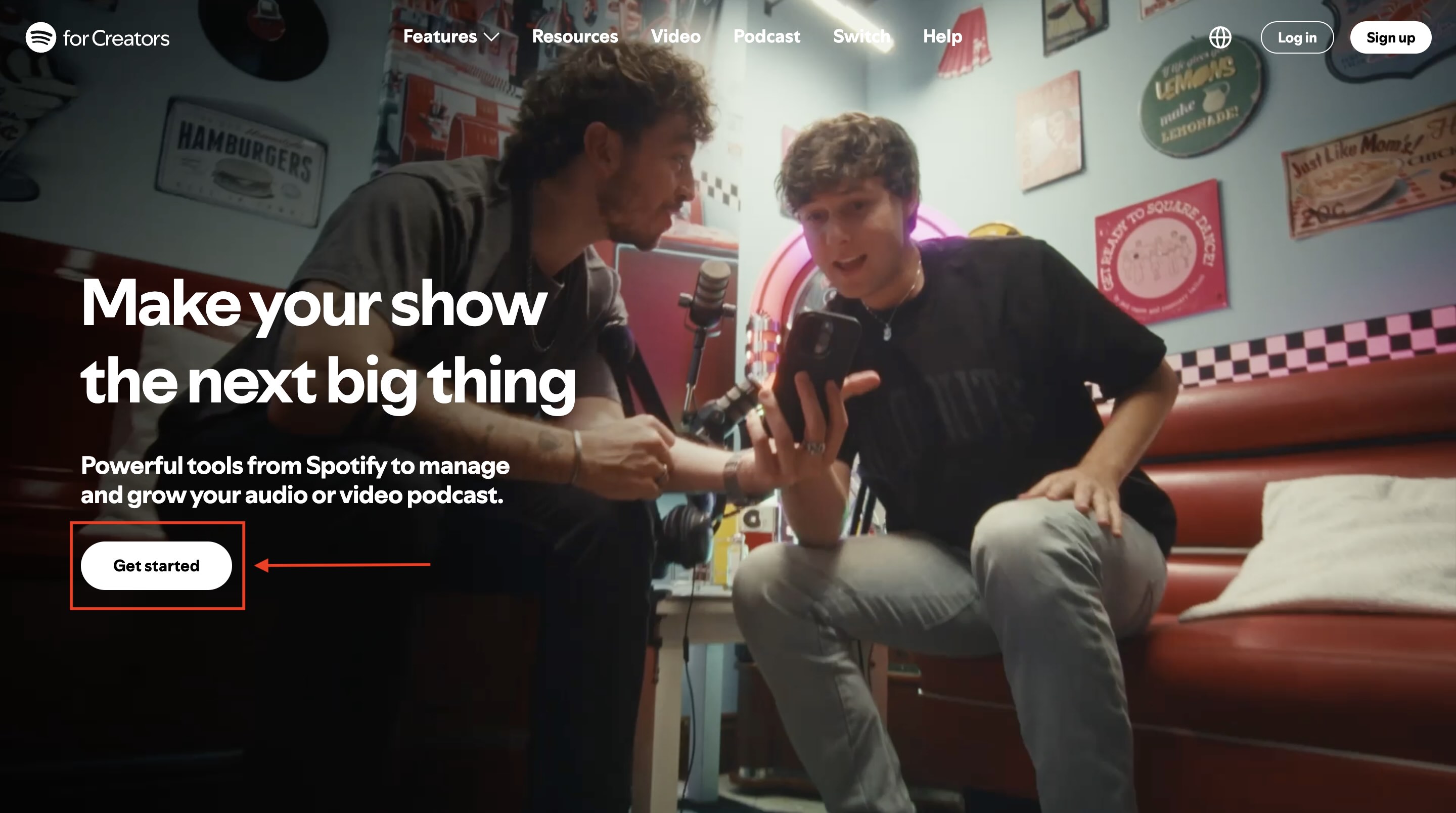
Step 2
Click "Sign up" and create your account if you don't already have a Spotify account. You can sign up using Google, Facebook, or Apple, or by entering your phone number.
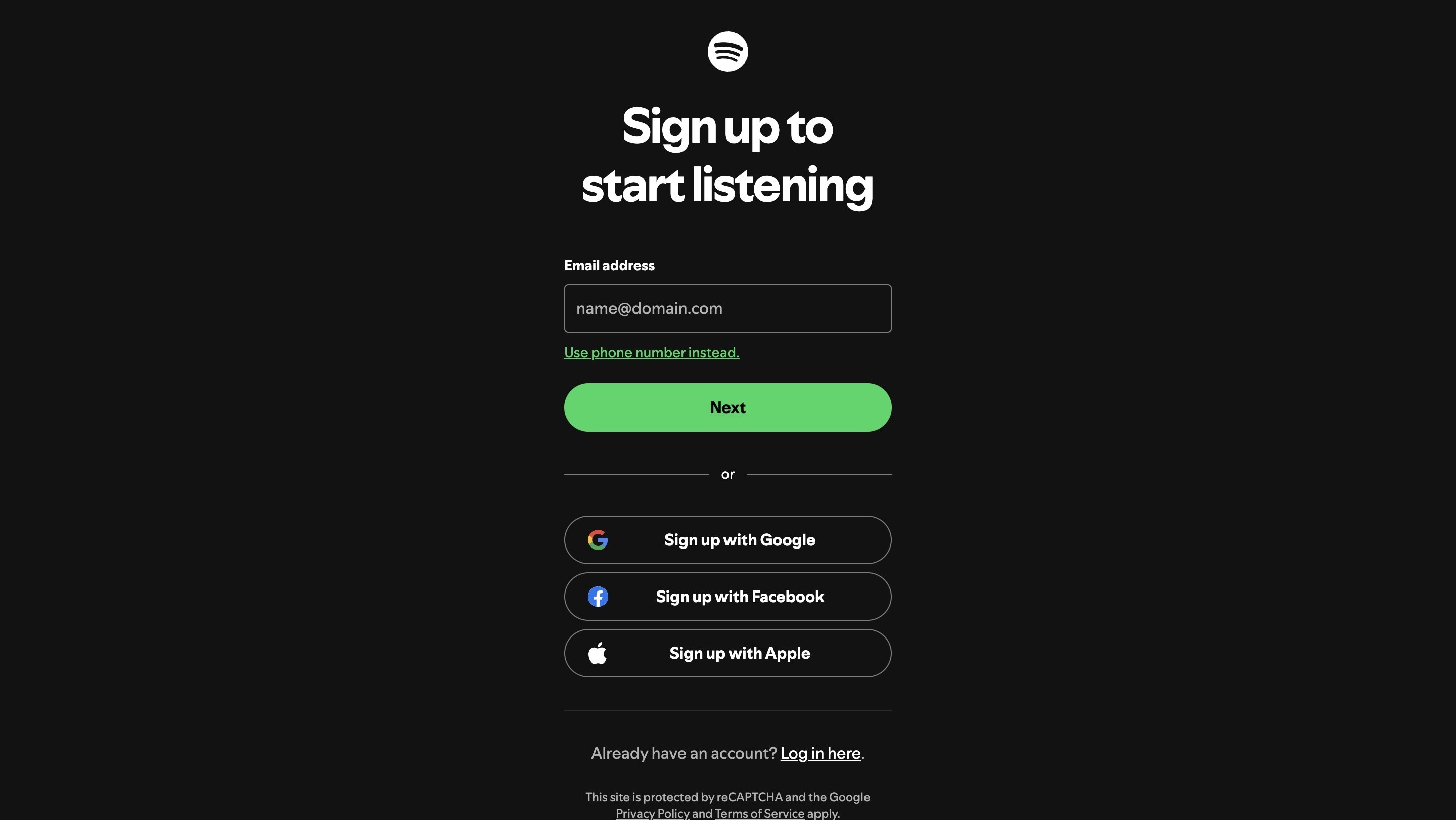
Step 3
After creating the account, you will see two options on the screen: "Create a new show" and "Find an existing show." If you have an existing one, click the second option or choose not to select the first option.
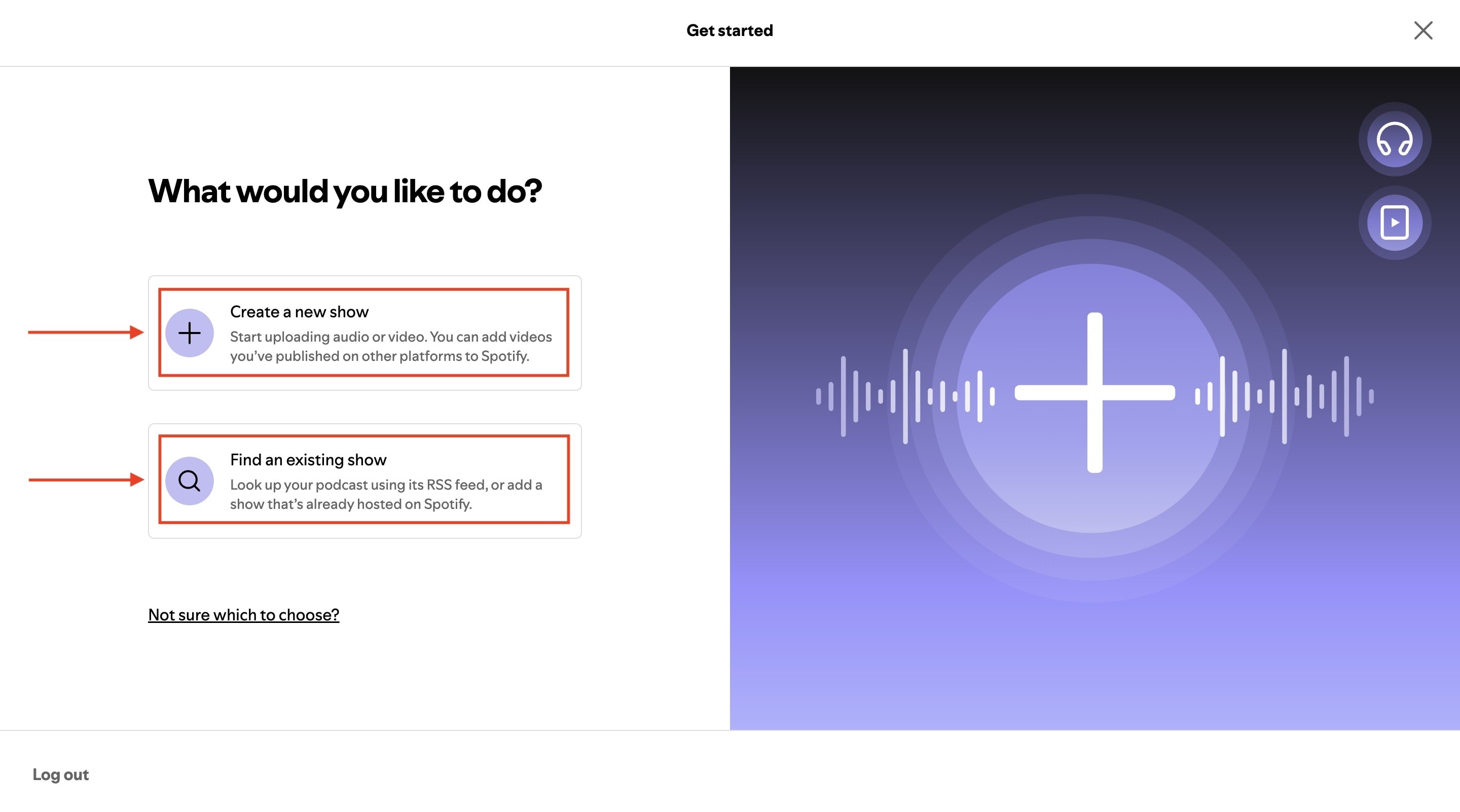
Step 4
If you chose "Find an existing show," you need to add a podcast name or email address. If you click "Create a new show," you will see a screen where you can choose from three options: Spotify for Creators, Megaphone by Spotify, or Somewhere else. Click "Spotify for Creators."
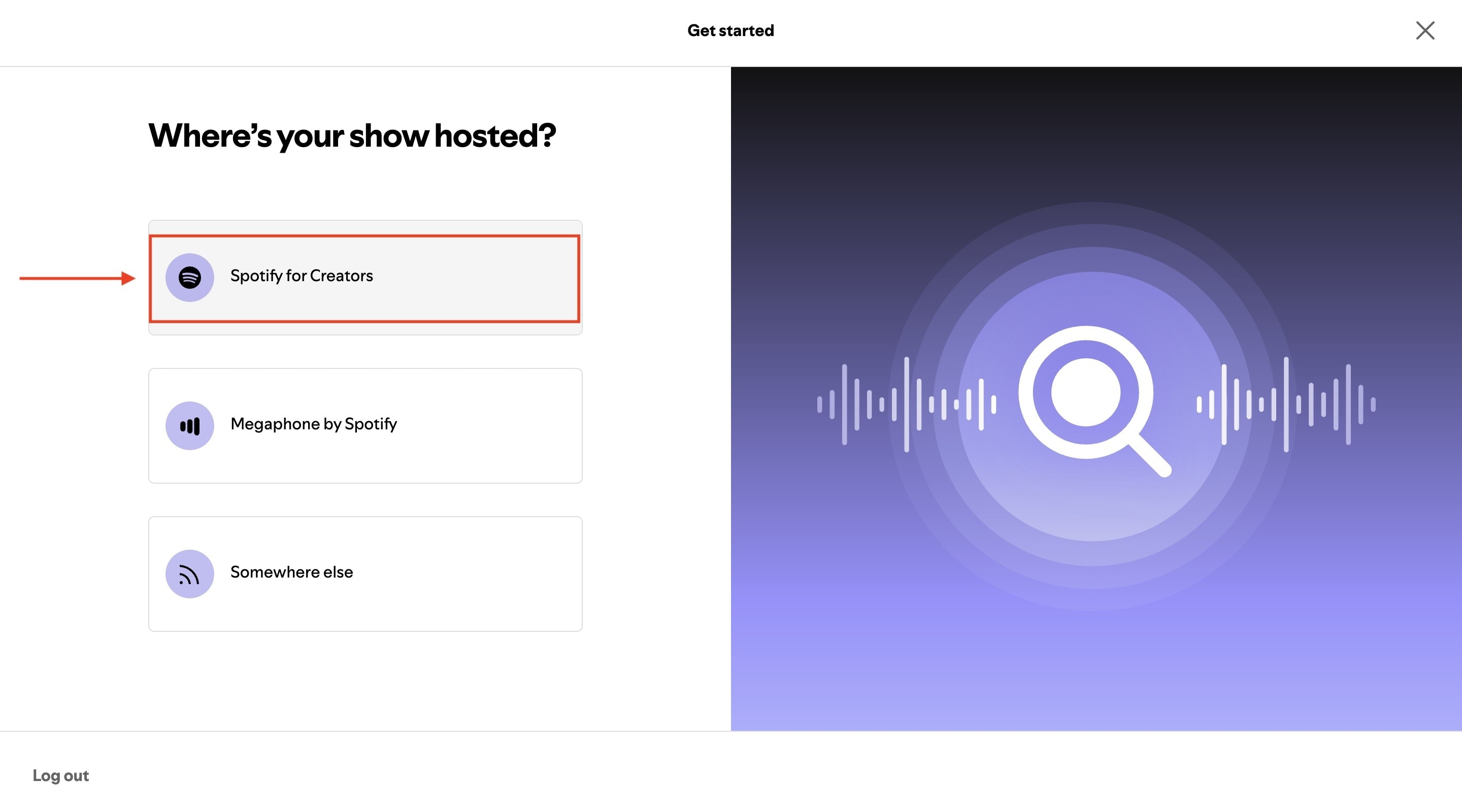
Step 5
For Creators access, you will be asked to sign up or continue with your Spotify account.
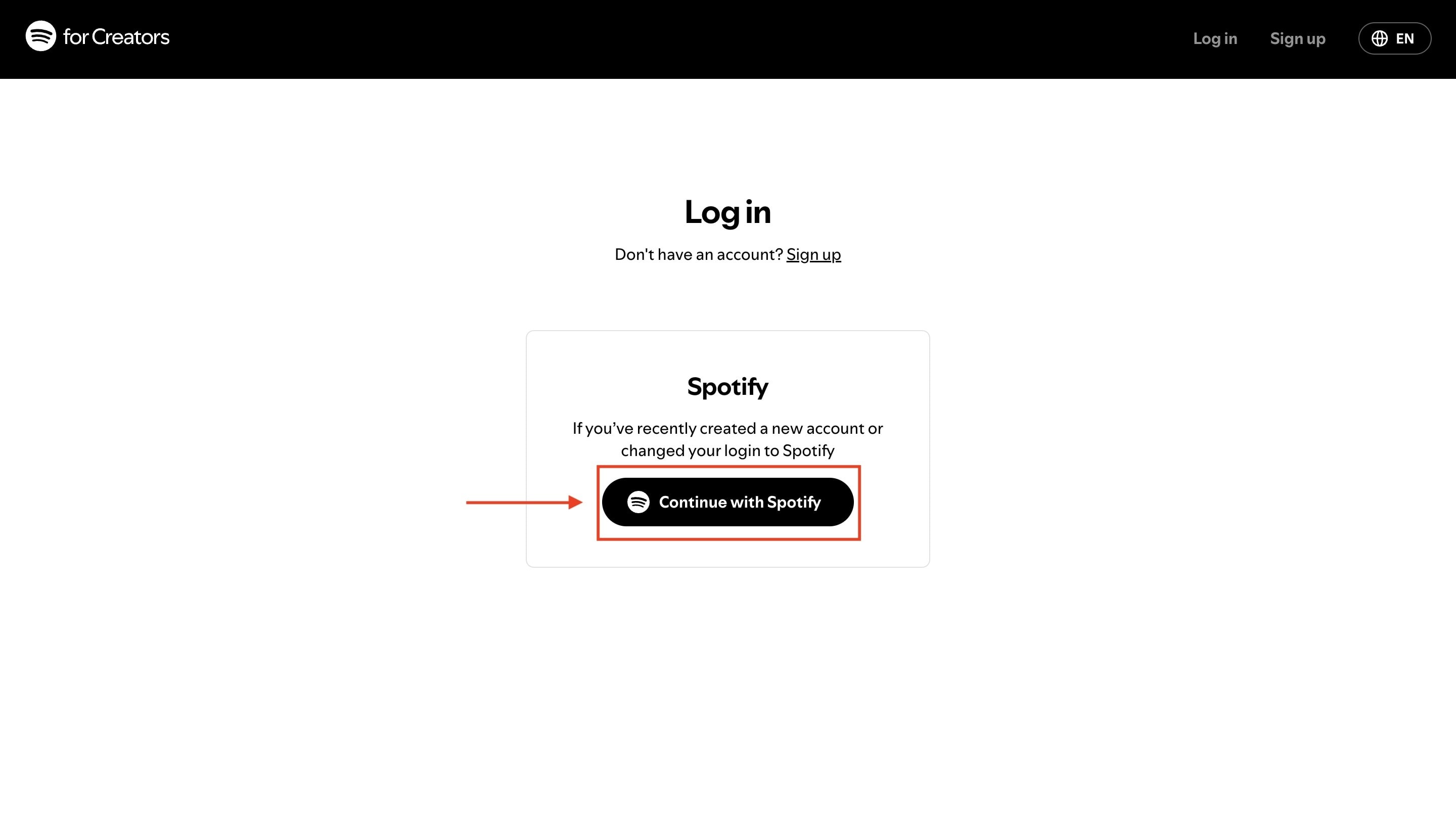
Step 6
You will be redirected to your Creator dashboard, where you can click on "New episode."

Step 7
If you have already recorded the file, click "Select a file" and upload the audio or video.
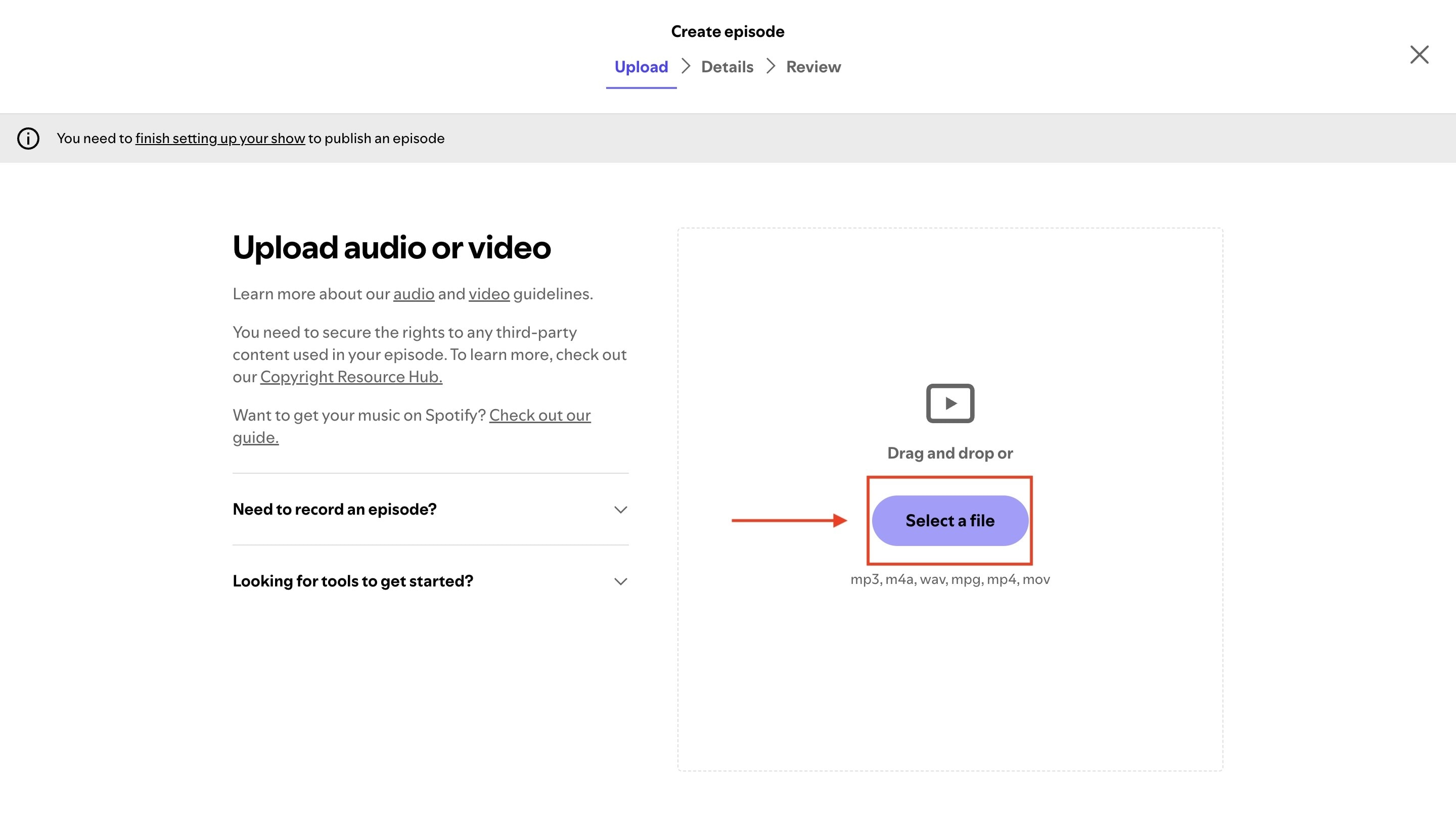
Step 8
After uploading the file, you need to fill out and complete the process. Here, you need to provide an eye-catching title description, add a cover, include a shortcut, and decide whether to add promotional content. Also, specify the episode number, select the type of episode, and click the preview button.
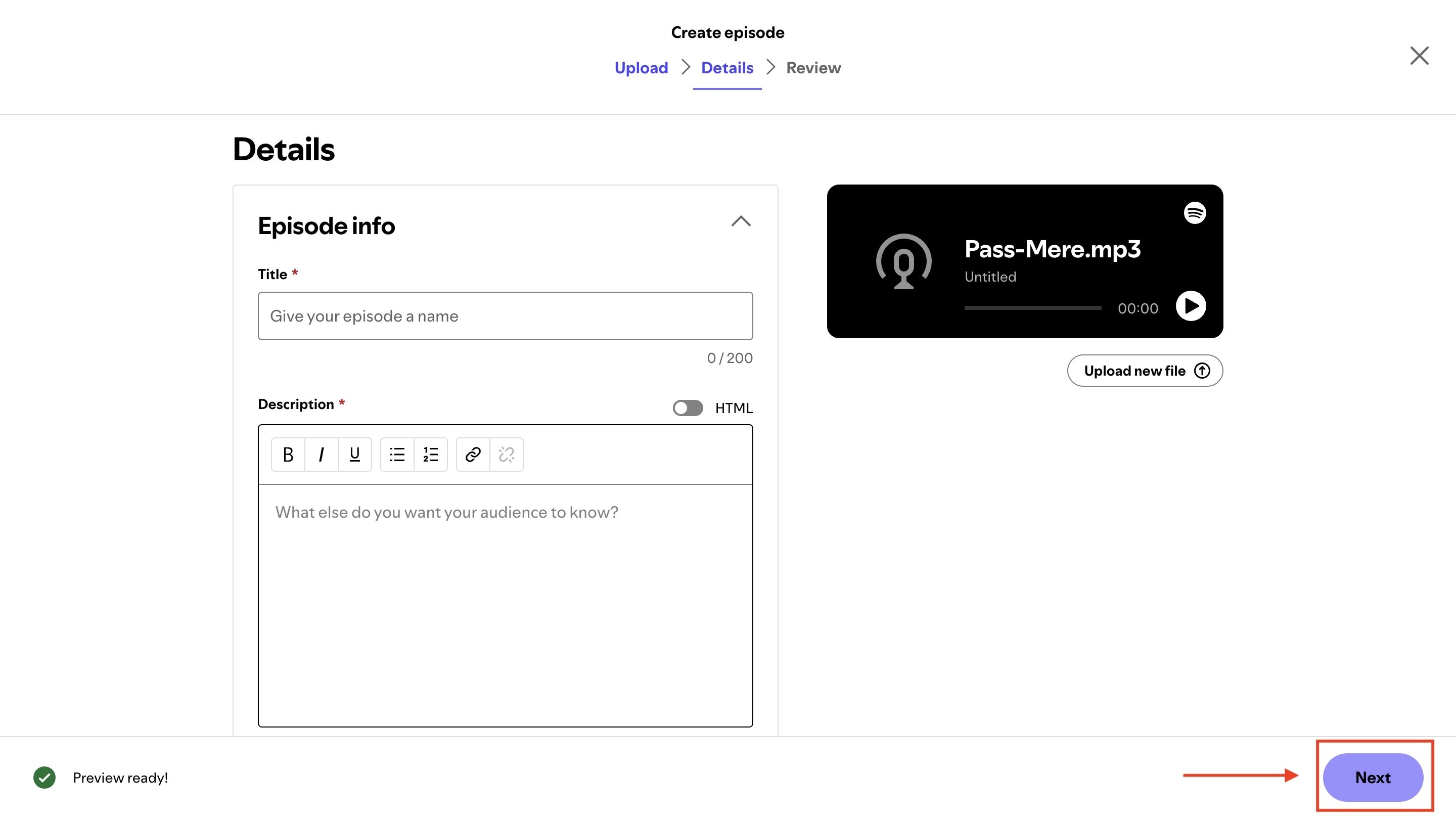
Step 9
Review all the details and click the "Publish" button or schedule for later.
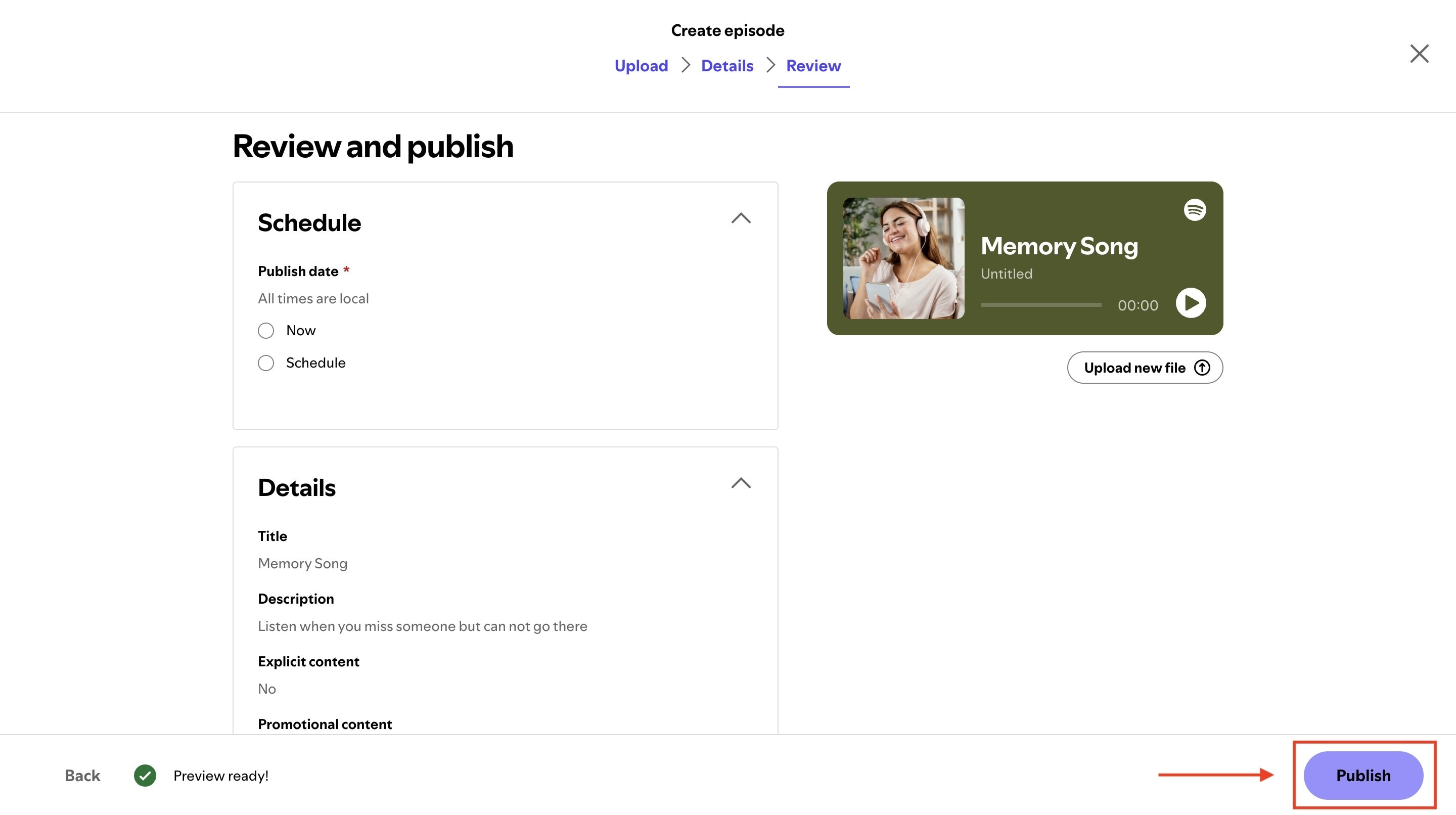
*Note:
RSS Distribution only enables your RSS feed on Spotify after the first episode is published.

Super Easy to Use Noice Reducer for Win and Mac
Part 4. How to Reduce the Noise of Existing Files
Pre-recording or recording a podcast in real-time can result in poor sound quality due to ambient noise. Background noise, laughter, or breathing can distract the viewer's attention. To make sure it won't happen, you can tryWondershare UniConverter's Noise Remover. It's easy-to-navigate interface lets you cut the noise in just a few steps.
![]()
Key Features
- It offers batch processing, making your work streamlined and saving time. You can upload multiple audio videos at once, and within a minute, your noise-free file is ready to add to Spotify.
- With its Video Merger, you can merge multiple audio and video files into a single file.
- If your video or audio is getting unnecessarily long, its Cutter feature lets you trim that specific part without affecting the overall content.
- If you want a different voice, UniConverter's Voice Changer can modify your voice and add a fresh touch.
Here is how to remove noise from your audio or video and make it ready for the podcast on Spotify:
Step 1
On the homepage, navigate to "Audio > Noise Remover."
![]()
Step 2
Upload your audio or video file and click the "Start All" button to cut the noise.
![]()
Step 3
The process will begin and take a few minutes to complete, saving the results.
![]()
Part 5. How to Start A Podcast on Spotify with Real-time Record
For those who want to create content on the go, Spotify's real-time recording feature makes it easy to start broadcasting immediately. Learning how to create a podcast on Spotify with live recording opens up opportunities for spontaneous content creation.
Here is the step-by-step guide to starting a podcast on Spotify by real-time recording:
Step 1
Create your Creators account if you haven't already done so by following the step-by-step process detailed earlier or by navigating to "Create episodes >Need to record an episode." Click "Create with Riverside."
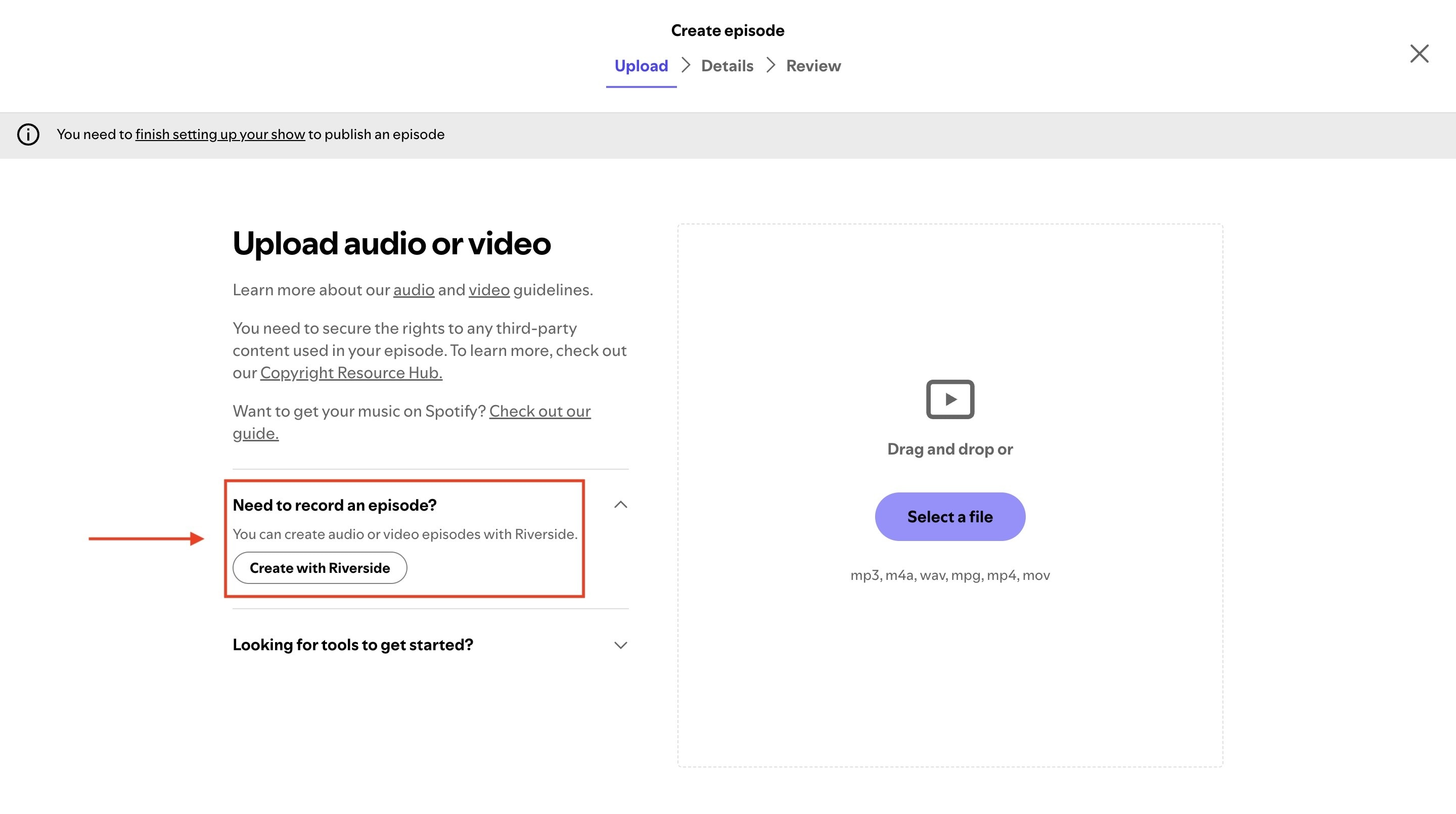
Step 2
Create your free Riverside account. For the best experience, sign up with Spotify and click the "Agree" button to proceed.
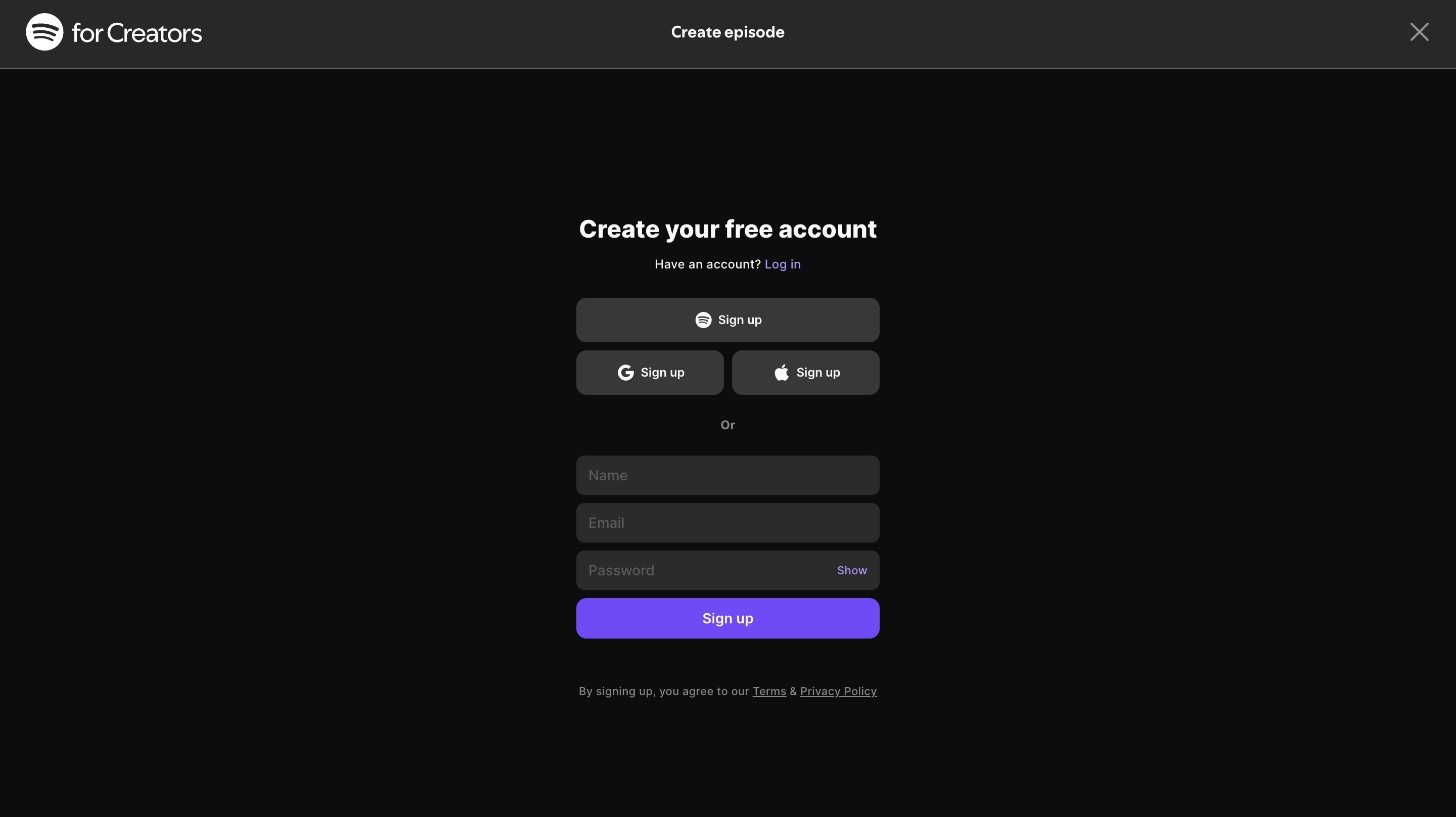
Step 3
After signing up, you are directed to the page. Here, click the "Record" option and select either "Video & audio" or "Audio only" according to your preferences.
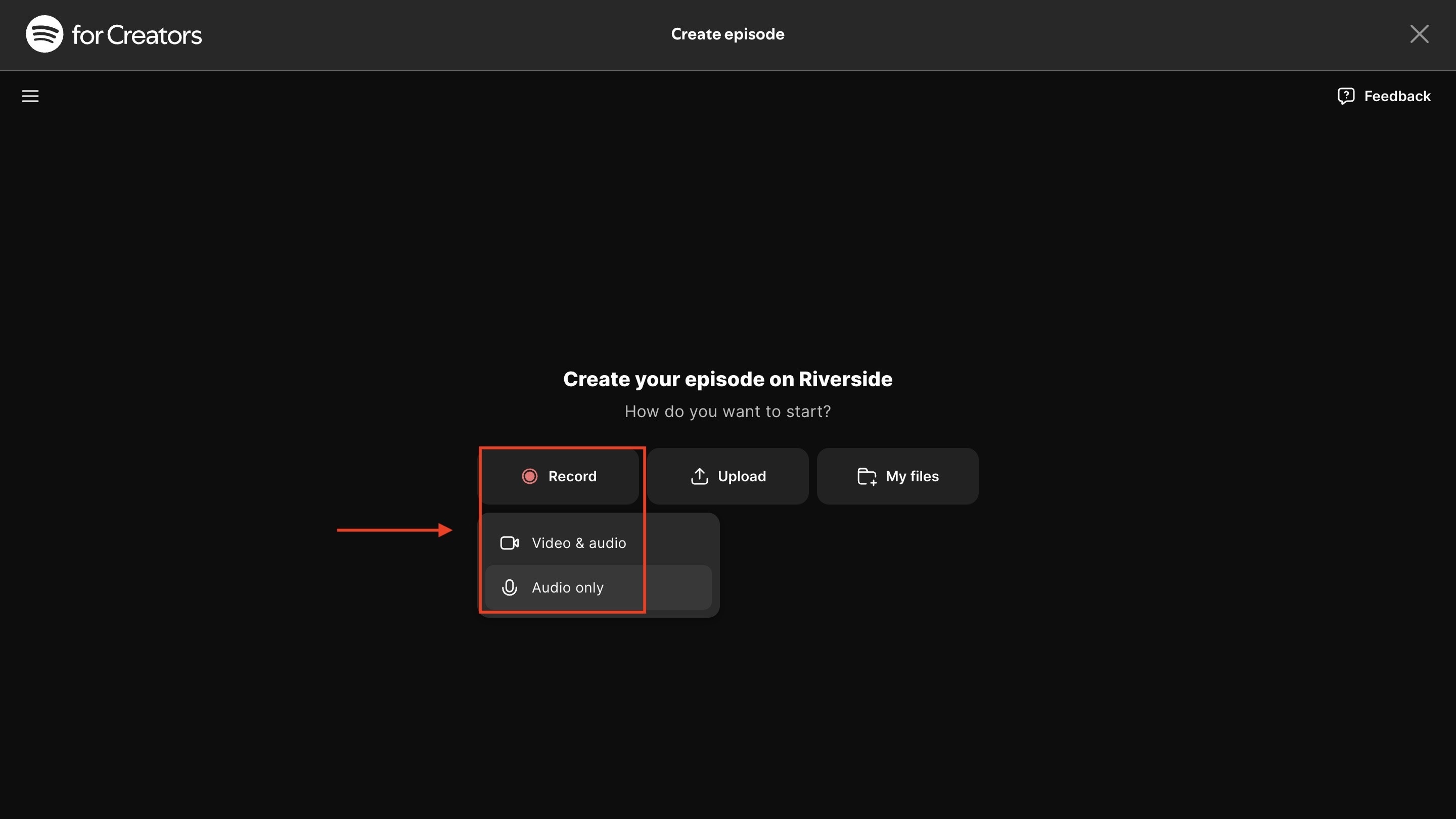
Step 4
When you click the record option, a pop-up will come with language options for your captions and transcripts.

Step 5
You can now record your first podcast. Check the settings first. You can also invite people to view the live recording or turn on the video if you haven't already done so, and then click the "Record" button.
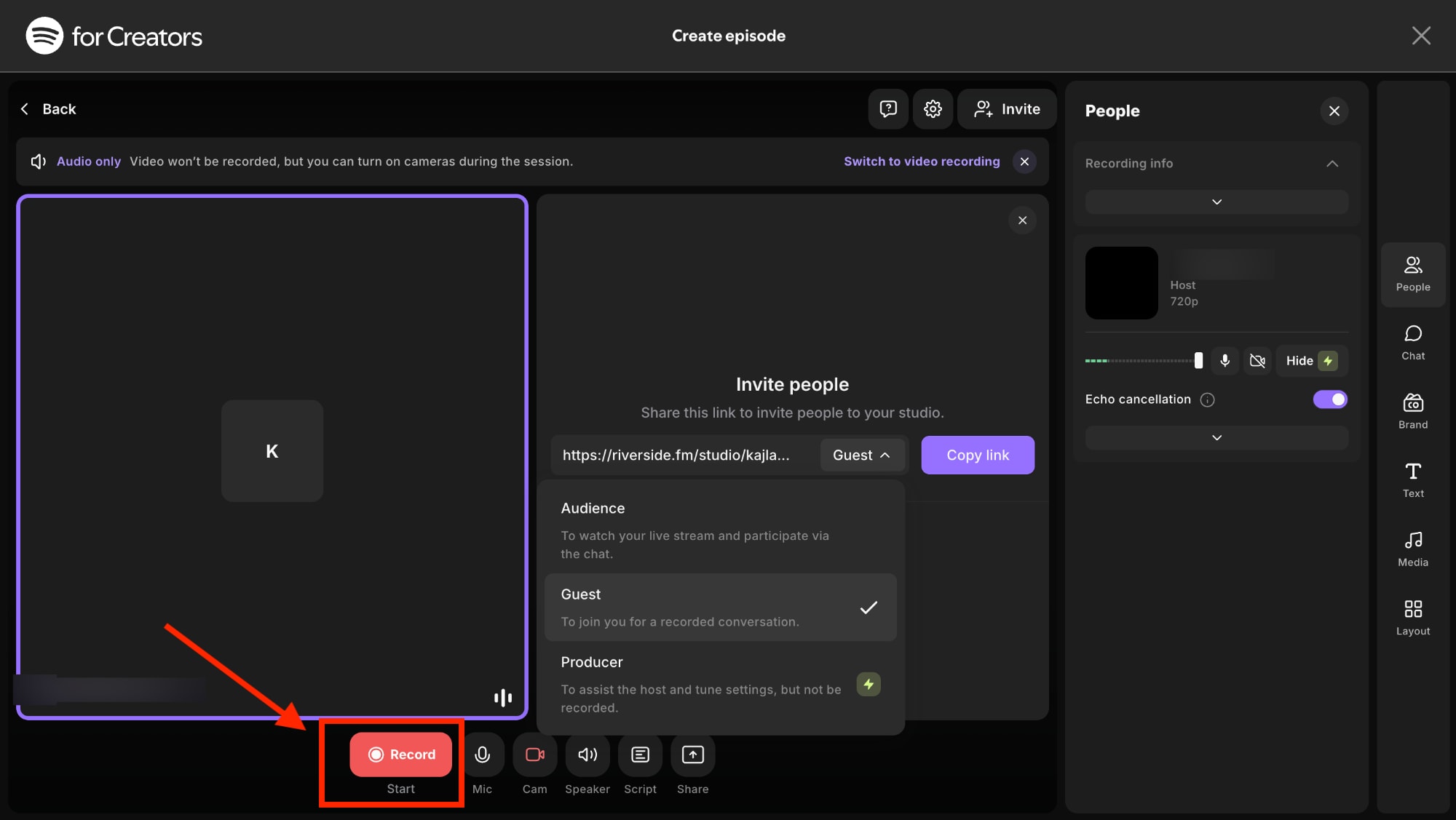
Step 6
Once the recording is done, click the stop button, and the uploading process will start.
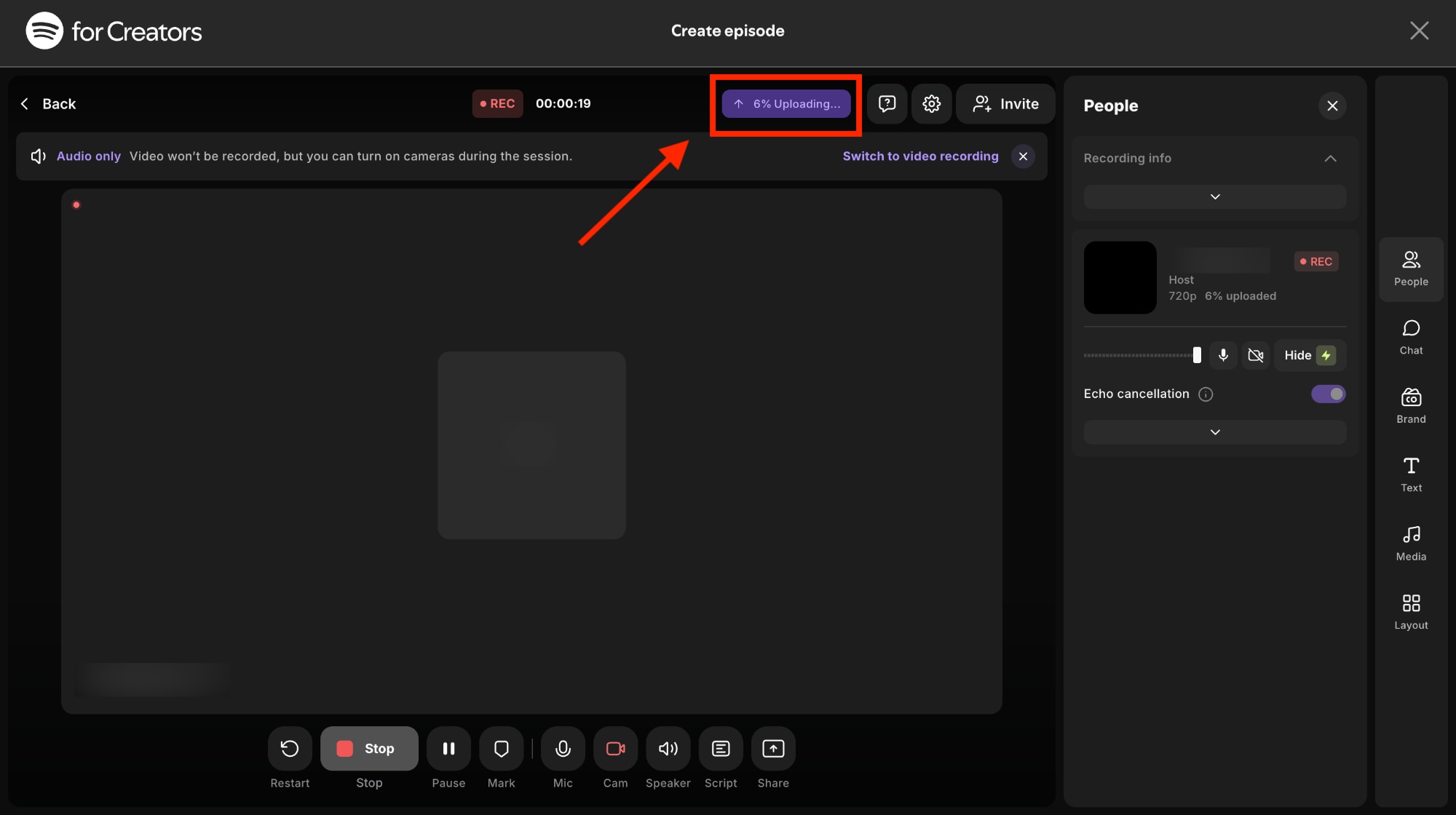
Step 7
In a few minutes, the file will be uploaded successfully, and a pop-up will appear in the bottom left corner. Click "Edit recording" to ensure the quality.
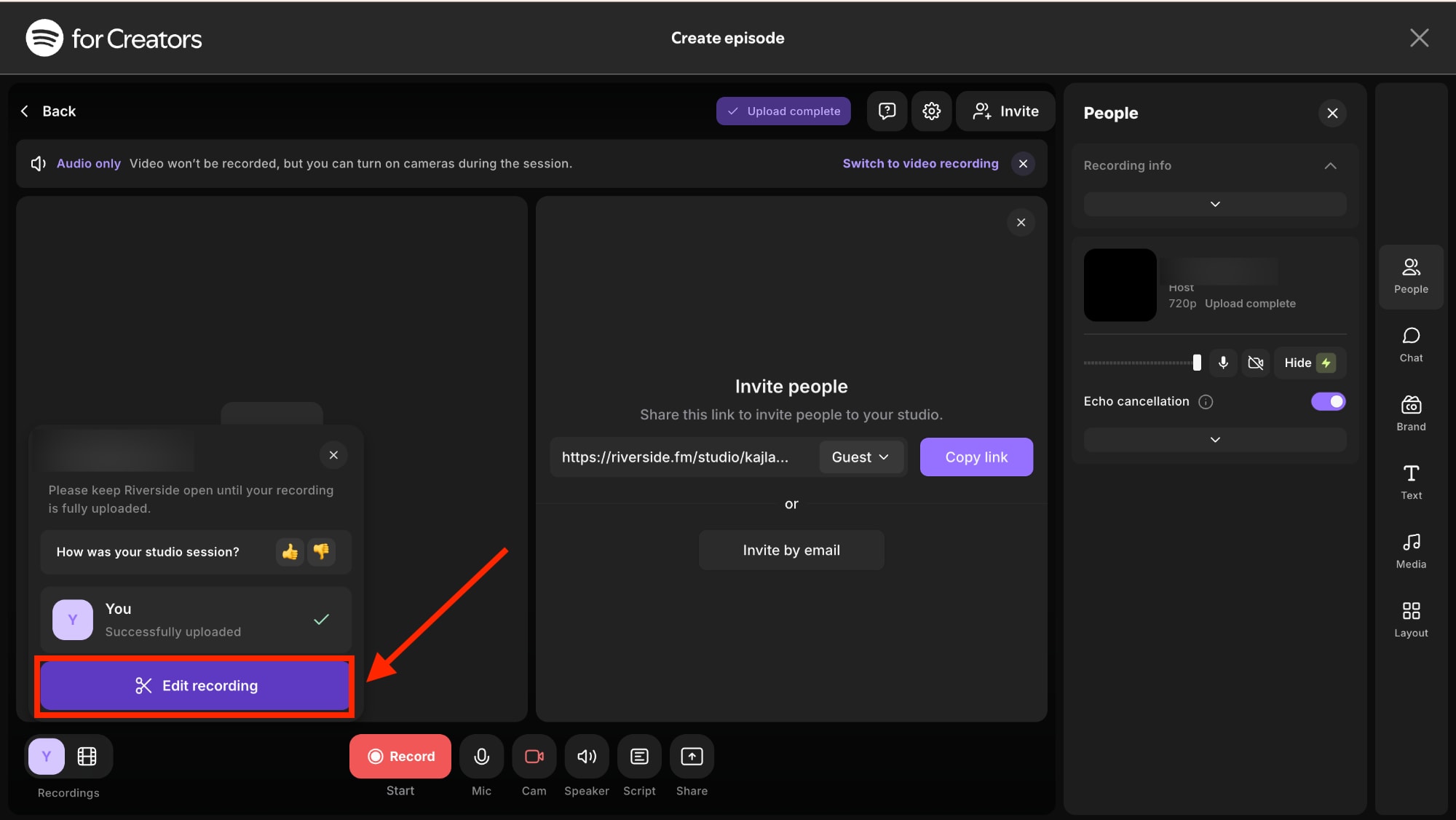
Step 8
You can add new chapters here, download the transcript, download subtitles, or copy the transcription directly to the clipboard. Click the "Export to Spotify" in the upper right corner, or copy the link to share with your friends before uploading to Spotify.
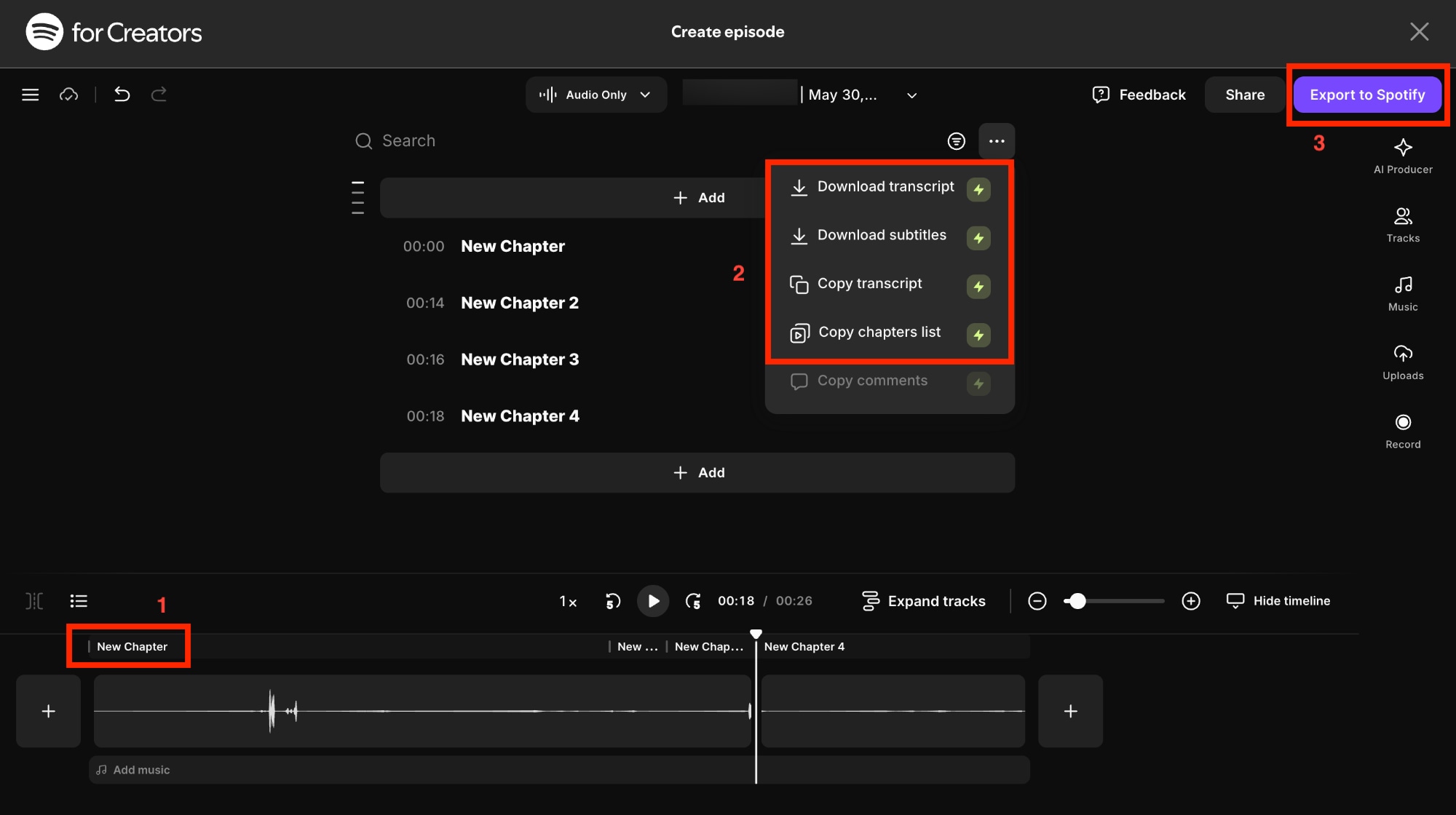
Step 9
Before exporting to Spotify, you can change the audio quality, normalize the audio level, and remove background noise.
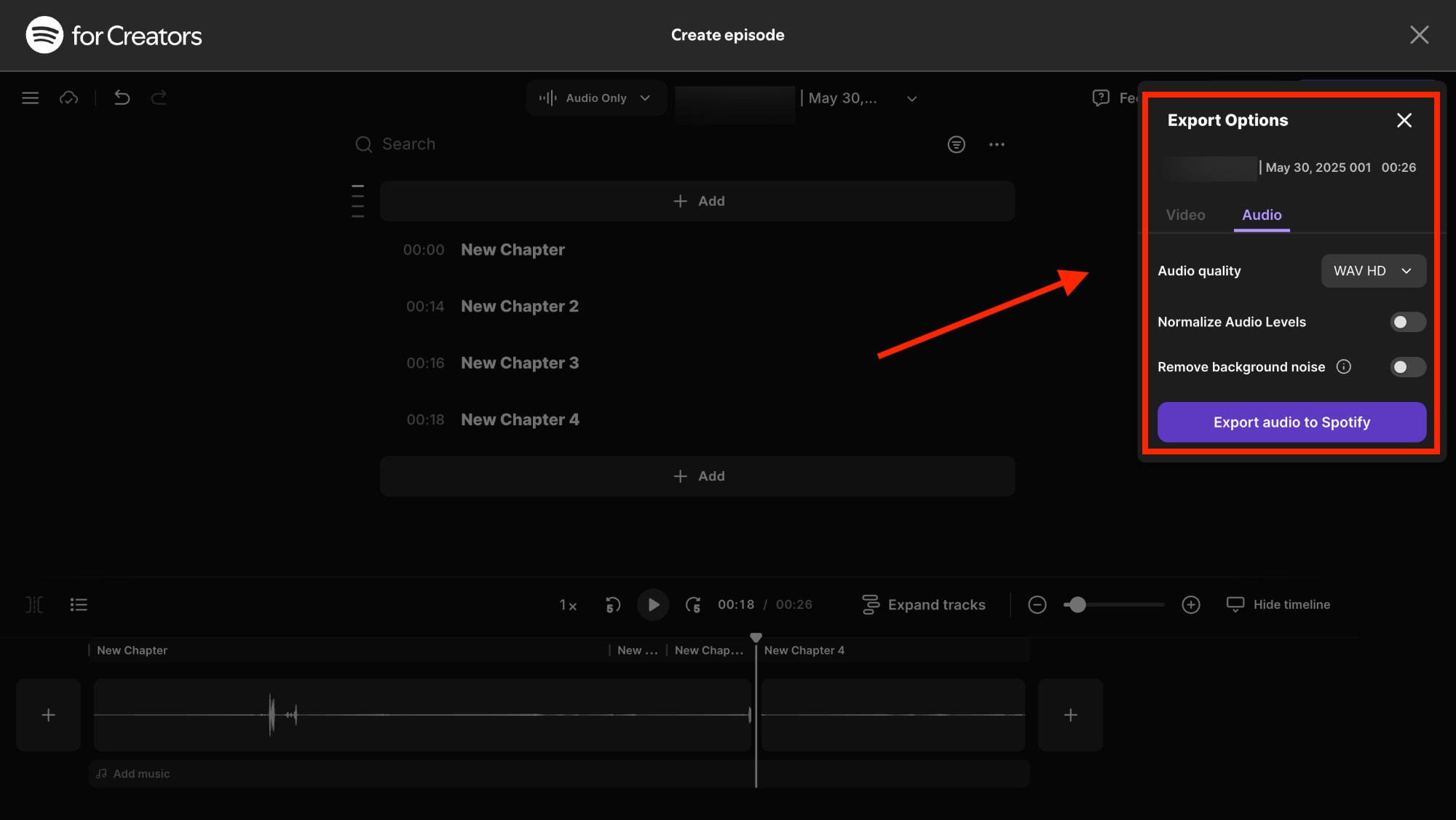
Step 10
Your audio or video will easily export to Spotify. Here, you add the episode information, click the "Next" button to review, and then hit the publish button. Your first recording is now live and ready to meet your audience!

Part 6. Tips for Gaining More Audience for Your Spotify Podcast
Once you know how to make a Spotify podcast, the real challenge begins: connecting with a broader audience and driving growth. Building a loyal listener base takes strategy, consistency, and genuine engagement with your community.
Here are some strategies for your podcast growth:
- Consistency is King: Stick to a regular publishing schedule, whether it's weekly, bi-weekly, or monthly. Your audience needs to know when to expect new content from you.
- Optimize Your Titles and Descriptions: Use keywords that your target audience would search for. Create episode titles that are both intriguing and indicate the content they'll cover.
- Leverage Social Media Cross-Promotion: Share clips, behind-the-scenes content, and episode highlights on Instagram, TikTok, Twitter, and Facebook to drive traffic back to your Spotify podcast.
- Engage with Your Community: Respond to comments, ask questions in your episodes, and create content based on listener feedback. Utilize Spotify's interactive features, such as polls and Q&As.
- Collaborate with Other Podcasters: Guest appearances, cross-promotions, and podcast swaps can expose you to entirely new audiences who might love your content.
- Focus on Audio Quality: Invest in a decent microphone and learn the basics of audio editing. Poor sound quality is the fastest way to lose listeners, regardless of the quality of your content.
- Create Compelling Cover Art: Your podcast artwork is often the first thing potential listeners see. Make it eye-catching, professional, and representative of your content.
- Utilize Spotify's Analytics: Pay attention to your listener data to understand what content performs best, when your audience is most active, and demographic information to tailor future episodes.
Part 7. Conclusion
Now you know exactly how to start a podcast on Spotify and turn your creative ideas into engaging content that reaches millions of listeners! From uploading pre-recorded files to real-time recording with Riverside, you've got multiple paths to get your voice heard on one of the world's biggest platforms.
Remember, successful podcasting isn't just about the technical setup; it’s about consistency, quality audio, and genuinely connecting with your audience. For audio quality,
UniConverter can remove noise, making your audio crystal clear and professional-sounding before you upload it.
Your podcasting journey starts today; pick your method, create the first episode, and make it of high quality using UniConverter!
Super Easy to Use Noice Reducer for Win and Mac
FAQs
-
1. Is uploading a podcast to Spotify free of charge?
Yes, submitting your podcast to Spotify is entirely free of charge. The platform generates revenue through advertising and premium subscriptions rather than charging creators directly. -
2. How long does it take for my podcast to appear on Spotify after I submit it?
Most podcasts are approved and listed within 24 hours, though it can take anywhere from a few hours to 5 days. In rare cases, approval might take a few weeks. -
3. Can I monetize my podcast on Spotify?
Yes, Spotify offers several monetization options, including paid subscriptions, ad insertion, and sponsorship opportunities. You can also seek outside sponsorship independently. -
4. What happens if I use copyrighted music in my podcast?
Using copyrighted music without permission can result in your episodes being flagged or removed, or your entire podcast being taken down. Always use royalty-free music or obtain proper licensing.



